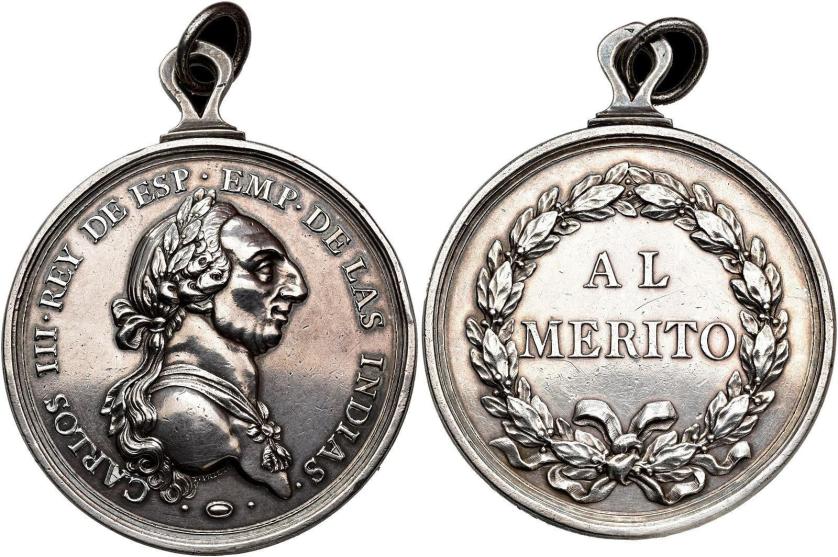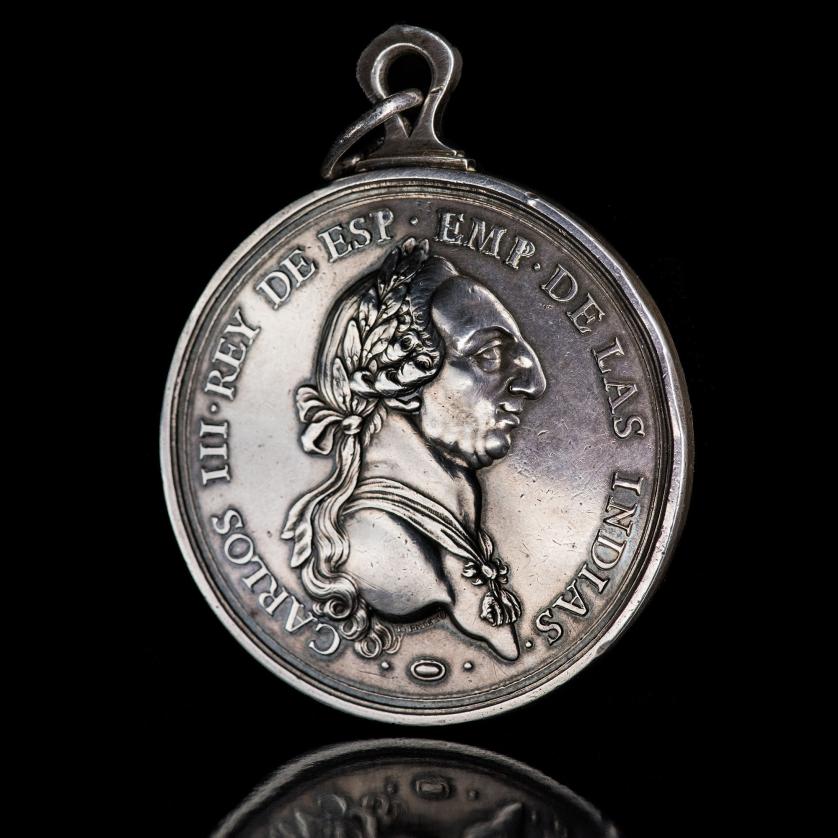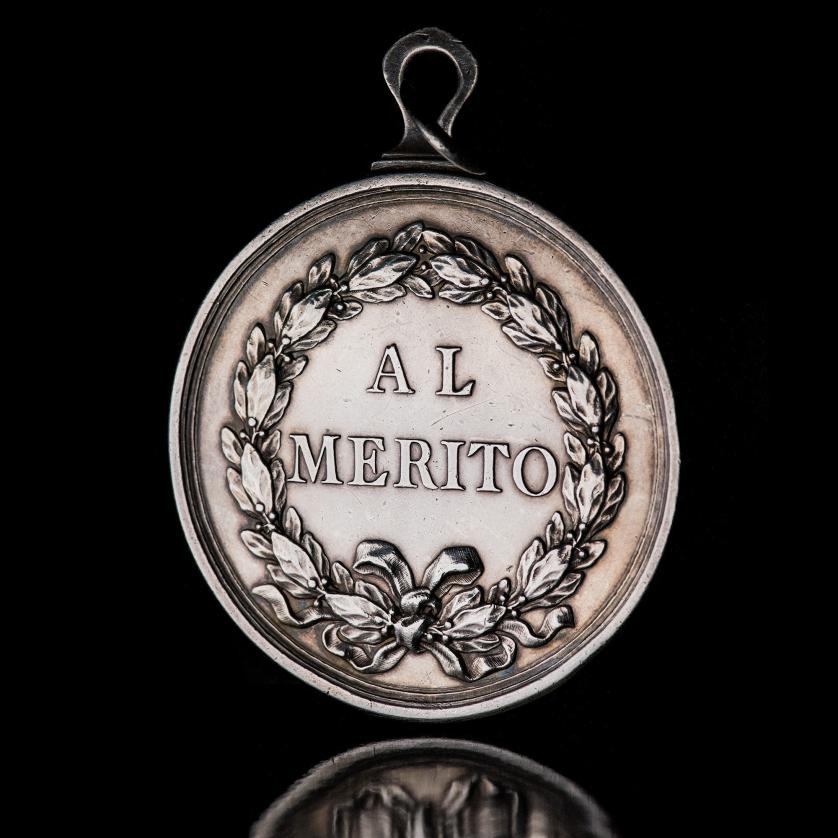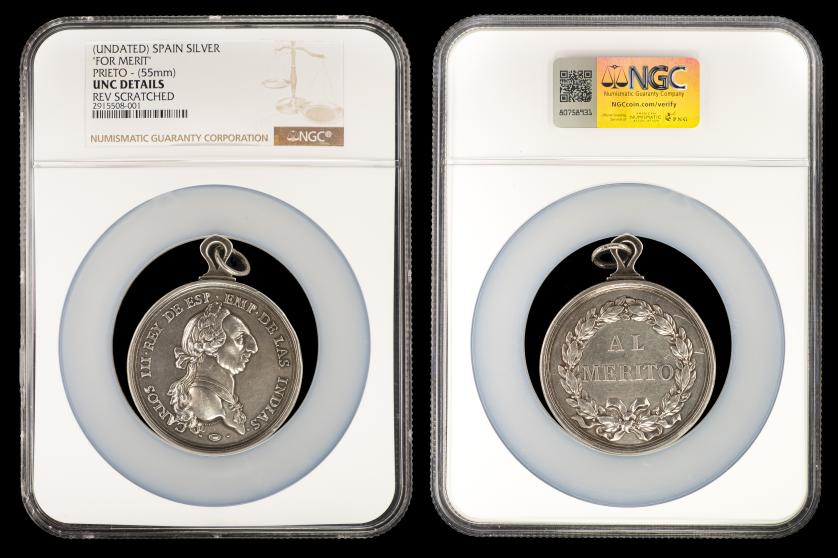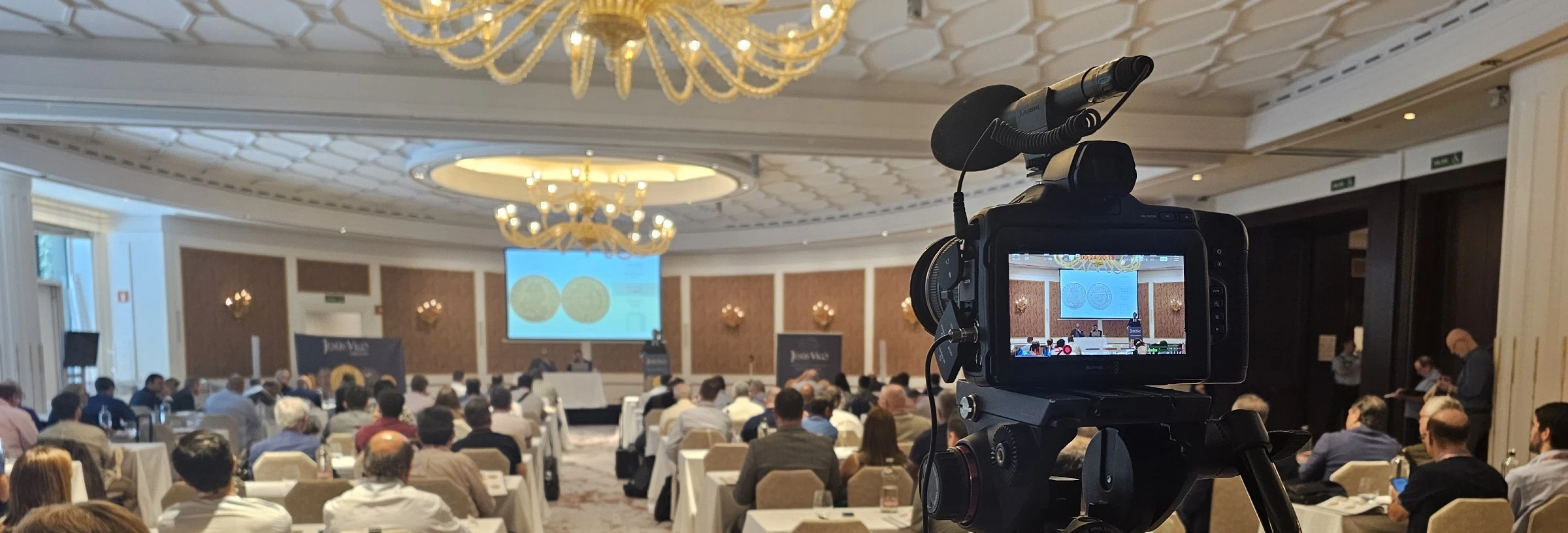Lot 342
Auction date
26-06-2024 15:00 CET
Finalized
Starting price 28.000 €
SOLD BY 42.000 €
CHARLES III
CHARLES III. Medal of merit. Loyalty of the Indian chiefs of Louisiana. Laureate bust of Charles III with the Order of the Golden Fleece right; CARLOS III REY DE ESP. EMP. DE LAS INDIAS. Engraver: T.PRIETO. Rev. AL MERITO within laurel wreath. AR 55 mm. With ring. Encapsulated by NGC UNC DETAILS. Extremely rare.
Categories
NumismáticaIn May 1777, Bernardo de Gálvez, governor of Louisiana, wrote to his uncle, José de Gálvez, Secretary of the Indies, about the importance of sending new medals to the Indian chiefs in the area to ensure their loyalty. The idea was brought to the attention of King Carlos III, who ordered the creation of a new "Medal of Merit" with a larger module (54mm) than the previous ones. This was intended to appease the Indian chiefs of the Louisiana province, who complained during their visits to New Orleans about being less esteemed than those in the neighbouring territory under English rule, who were given larger silver medals (Indian peace medals) as rewards for their deeds or to confirm their allegiance to the British Crown (Archivo General de Simancas, Oficio de José de Gálvez al Secretario de Hacienda Miguel de Múzquiz on August 19, 1777, Secretaría y Superintendencia de Hacienda, leg.834). For this purpose, the Royal Mint was instructed to have the chief engraver, Tomás Francisco Prieto, create a new medal identical to the one made in 1764 to distinguish the officers of the new militias established in Havana, but of larger size. However, a small detail was included in the final design, with the addition of the Golden Fleece ribbon around the king’s neck. The final design was approved in January 1778 and each medal was equipped with a loop for hanging. The medals were immediately sent to the Indies with explicit instructions that they were intended to honour "the chiefs of our Indians of Louisiana," while the smaller-sized previous medals were reserved for "second chiefs." There was a second issue of these medals in 1779, prompted by the war that had just begun against Great Britain, and a final issue in 1780, with the remaining pieces used in subsequent years. The surviving medals are extremely rare, both in public institutions and in private hands, with some items being discovered in Indian burials. The presentation of these medals with the Royal Effigy is expressly mentioned in peace treaties signed with Indian nations, such as those made with the Creeks, Cherokees, Choctaws, Chickasaws, and Alabamas, where the text refers to their leaders as "chiefs of the large and small medal" or "chiefs of the large medal."
Recomended lots
Confirm your maximum bid
You are bidding for €
At the time of auction we will contact you by phone:
Confirm your maximum bid
You are bidding for
€
Loading…
Conecting with the server
Are you sure you want to buy the lot?
Confirm your maximum bid
You are bidding for
€

